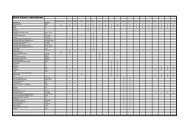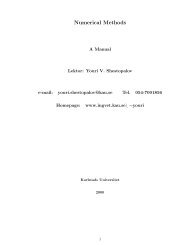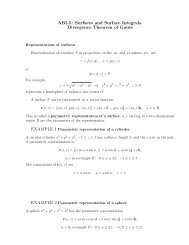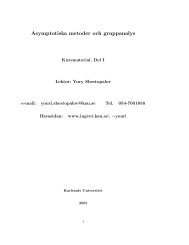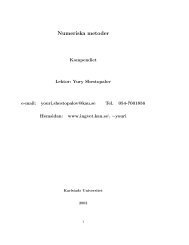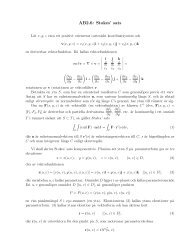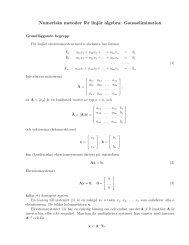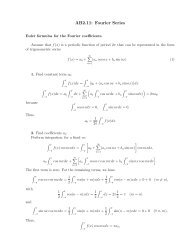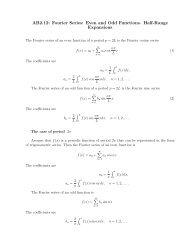You also want an ePaper? Increase the reach of your titles
YUMPU automatically turns print PDFs into web optimized ePapers that Google loves.
In terms of the summation operators, this systems can be represented asLξ + Aξ = f; ξ = (ξ 0 , ξ 1 , . . . , ξ n , . . .) ∈ h 2 ; f = (f 0 , f 1 , . . . , f n , . . .) ∈ h 4 .Here, operators L and A are defined byL = {l nj } ∞ n,j=0, l nj = 0, n ≠ j; l 00 = ln 2; l nn = 1 , n = 1, 2, . . . ;nwhereA = {a nj } ∞ n,j=0,a nj = ε nj∫ ∫Π 1⎧⎨ 1, n = j = 0,ε nj = 2, n ≤ 1, j ≤ 1,⎩ √2, for other n, j.dxdsN(q)T n (x)T j (s)π 2 p 1 (x)p 1 (s) , (373)Lemma 7 Let N(q) satisfy the continuity conditions formulated in (367). Then∞∑n=1,j=0|a nj | 2 n 4 +∞∑j=0|a 0j | 2 1ln 2 2 ≤ C 0, (374)whereC 0 = 1ln 2 2∫1∫1∣−1 −1N(q)dxπp 1 (x)2∣∫ ∫dsπp 1 (s) +Π 1p 2 1(x) |(p 1 (x)N ′ x) ′ x| 2 dxdsπ 2 p 1 (x)p 1 (s) . (375)✷ Expand a function of two variables belonging to the weighted space L 2 [Π 1 , p −11 (x)p −11 (s)] inthe double Fourier–Chebyshev series using the Fourier–Chebyshev system {T n (x)T m (s)}:where∞∑ ∞∑−p 1 (x)(p 1 (x)N x(q)) ′ ′ x = C nm T n (x)T m (s),n=0 m=0C nm = − ε2 nmπThe Bessel inequality yields= ε2 nmπ∫1−1∫ 1−1∫= nε2 1nmπ 2= n2 ε 2 nmπ 2−1T m (s) dsp 1 (s)Π 1∫1−1∫ 1T n (x)(p 1 (x)N ′ x(q)) ′ xdxT m (s) ds Tp 1 (s)n(x)p ′ 1 (x)N x(q)dx′−1∫1T m (s)p 1 (s) ds U n (x)N x(q)dx′−1∫ ∫N(q)T n (x)T m (s)dxds = n 2 ε nm a nm .p 1 (x)p 1 (s)∞∑ ∞∑∫ ∫n 4 π 2 |a nm | 2 ≤ p 2 1(x)|[p 1 (x)N x(q)] ′ ′ x| 2 dxdsn=1 m=0p 1 (x)p 1 (s) .Π 178



